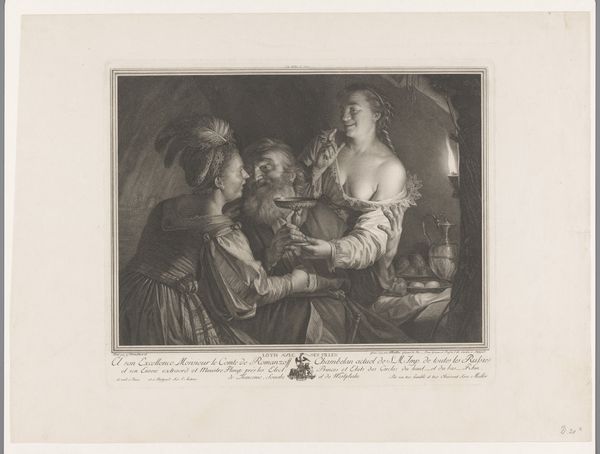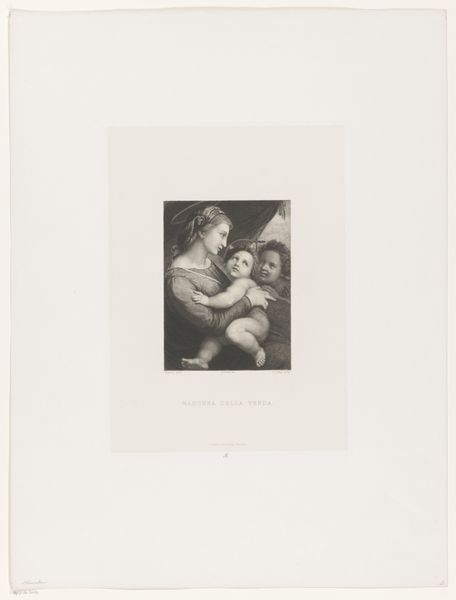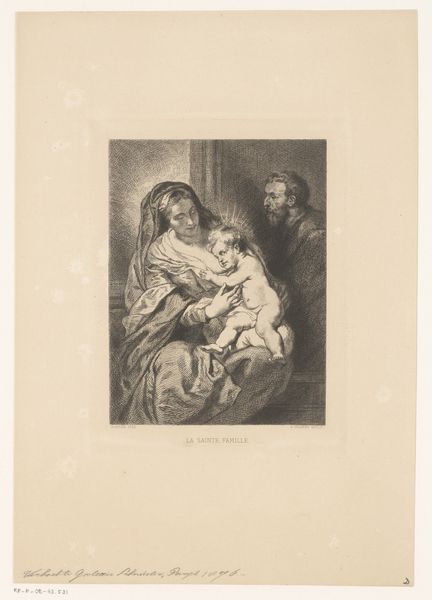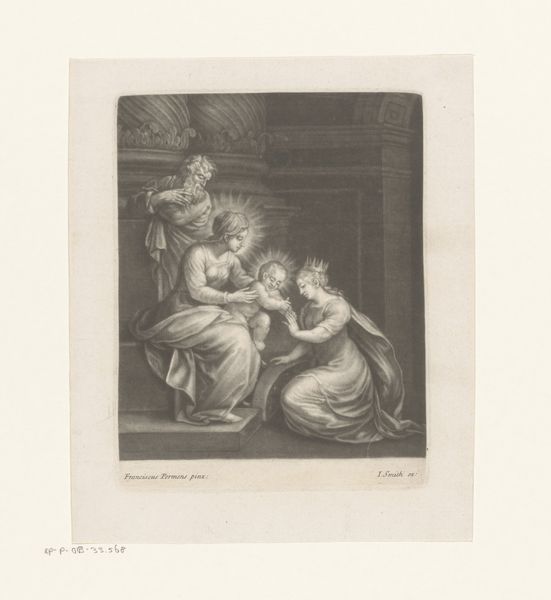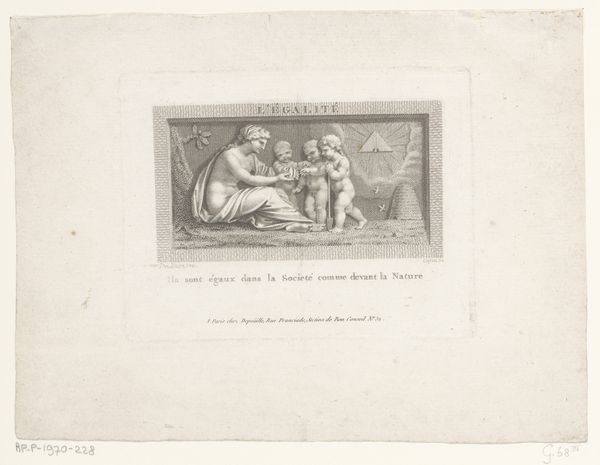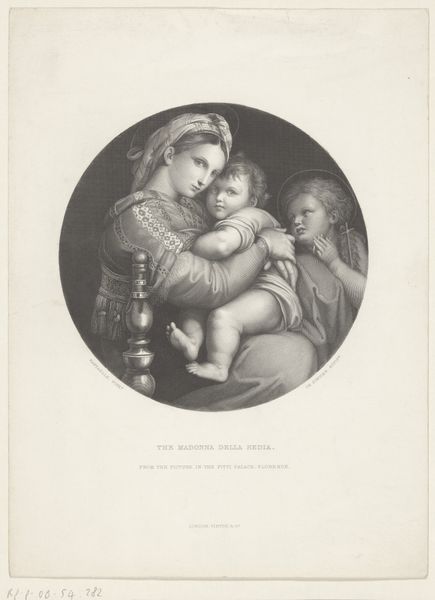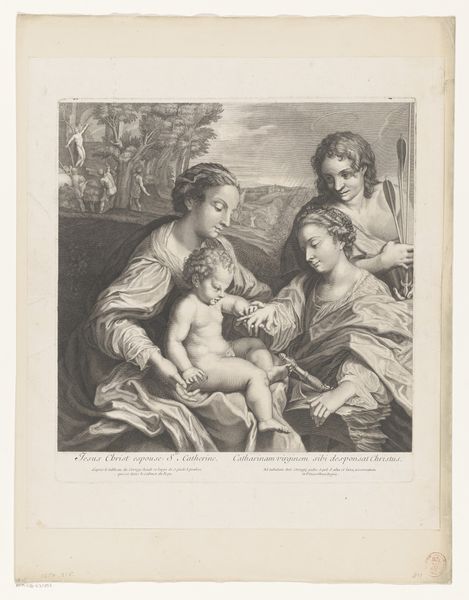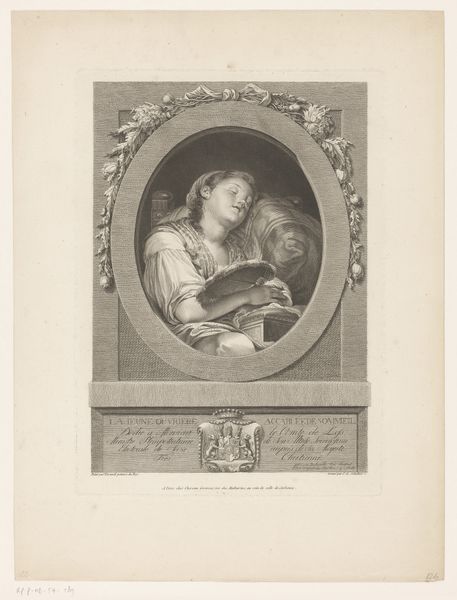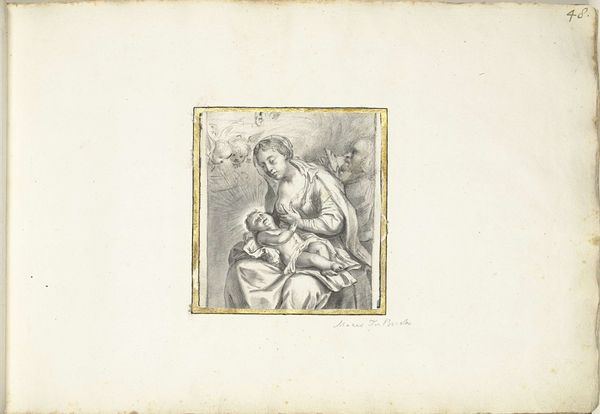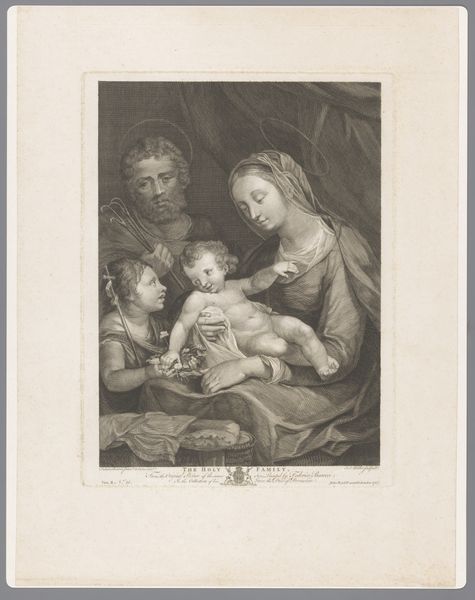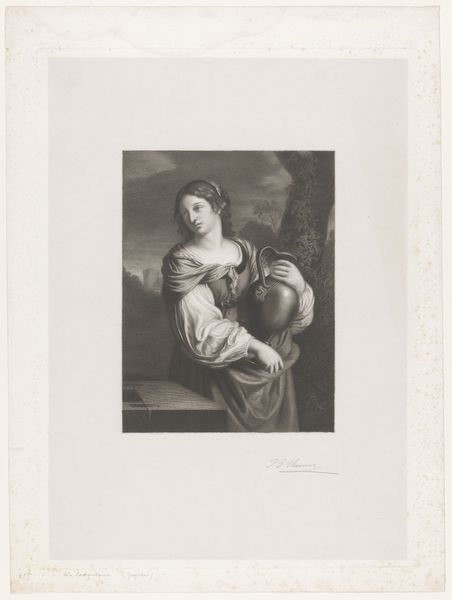
Dimensions: height 288 mm, width 287 mm
Copyright: Rijks Museum: Open Domain
Curator: This is "Maria met slapend Kind en Johannes de Doper," or "Mary with Sleeping Child and John the Baptist." It's an etching and engraving, made in 1774. Look at the softness! Editor: My first thought is tenderness, a quiet, domestic kind of reverence. It’s rendered in such incredibly fine lines, a delicate dance of dark and light. It almost feels whispered. Curator: Absolutely. Prints like this served a really important function. Without photography, engravings and etchings allowed for wider distribution of artworks, so you'd have an original painting, maybe owned by someone wealthy, and then prints of it circulating more widely. Disseminating artistic ideas! Editor: So, in a way, it's early image culture, a form of sharing stories and beauty, democratizing access through multiplication. Looking at Mary's face, there’s a melancholy, maybe a premonition of what's to come, hovering even over this scene of maternal love. It’s complex. Curator: It speaks to the era's artistic values as well, doesn't it? The focus on idealized beauty, moral lessons embedded in the imagery. Think of the influence the church had! You can see how powerful and important it would be to share images that promoted specific messages. Editor: But stripped of its original socio-political role, I think, the engraving transcends dogma. It's intimate. See how St. John seems almost to protect the slumbering Christ child? He looks at Him adoringly. Curator: There is such love embedded in it. Editor: It does invite reflection, about mother and child, sacrifice, and love. Even in reproduction, the emotions are powerfully transmitted through line and shadow. Curator: Yes, even through reproduction this engraving still gives a special kind of insight to the time, of home, art, and of motherhood.
Comments
No comments
Be the first to comment and join the conversation on the ultimate creative platform.
